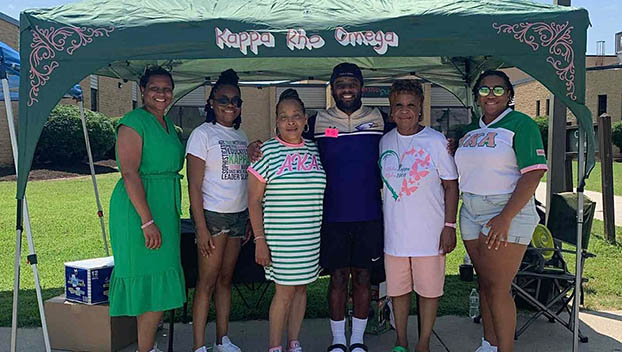Council discusses debt service
Published 11:00 am Wednesday, November 7, 2018

- R.T. Taylor, vice president of Davenport & Company, addresses the Kenbridge Town Council during its meeting Oct. 16.
The Kenbridge Town Council evaluated a presentation given by Davenport & Company to discuss its options for debt in the town.
R.T. Taylor, vice president, and Edward “Ted” F. Cole, III, senior vice president and co-head of public finance, said the main goals of the presentation were to give an overview of the Town’s existing tax-supported debt profile, to identify potential refunding candidates, to demonstrate potential savings for the 2007 VML/VACO bonds through a refunding analysis and to discuss the refunding approach and potential next steps.
Taylor said he and the town have had preliminary discussions about the town’s debt profile.
Trending
Documentation from the presentation Davenport & Company gave to the council cited that the the town’s outstanding debt service includes the Virginia Municipal League (VML) and Virginia Association of Counties (VACo) at $1,090,000, Rural Development Loans at $60,403 and Volunteer Fire Department obligations at $445,056 for a total of $1,595,459.
The presentation cited that debt service from the Volunteer Fire Department is paid by the department.
Taylor discussed the potential for refunding the bonds. Cole and Taylor said that the figures given in the presentation are estimates, and no exact amounts would be known for certain until a bank could provide input using the town’s figures.
“What we would propose is going out to the banks with an Request For Proposal (RFP) and asking them to provide to us rates held firm through a closing, and we would bring that back to you, show you the updated analysis, what it would look like based on real rates from the banks, and at that point you could tell us to move forward with it, or not,” Taylor said during the presentation.
He said potential next steps could be to collaborate with a bond council.
Town Mayor Emory Hodges said the bond council would need to make sure that the town’s actions on the debt would not violate any obligations the town has with VML or VACO.
Trending
“The cleanest way to look at this is to put a proposal together, a request together, put it out to the banks, ask them to send in proposals, and then we have an opportunity to come back to you with real rates, and you can make a decision at that point whether this is appealing or not,” Cole said.
“Two very sophisticated banks may look at this loan and somebody might be at 4 percent and somebody might be at 4 and a half percent (interest),” Cole said. “So that’s why it really is difficult to come in and say this is absolutely where the market is, the estimates we’ve used we think are very reasonable, but on any day two banks that you would consider to be looking at things at the same level with the same sophistication can be pretty far apart from one another, so that’s why we recommend the RFP process, and also purposely set it up in a way that it’s really riskless to you, we’re pretty efficient at putting the RFP out and getting those back, and coming back, and so that’s sort of a calculated risk on our part.”
Vice Mayor Ken Blackburn asked how long Davenport & Company would give the banks to create a plan for the town.
Cole said the company typically gives banks approximately three weeks, which gives time for the company to answer questions the banks might have.
Blackburn, the chairman of the finance committee, made a motion for the committee to explore the suggestions Davenport & Company officials made about the town’s debt. Members of the council voted unanimously in favor of the motion.
“We’re not obligated to anything,” Hodges said. “The finance committee thinks it’s a good idea to go the next step.”




